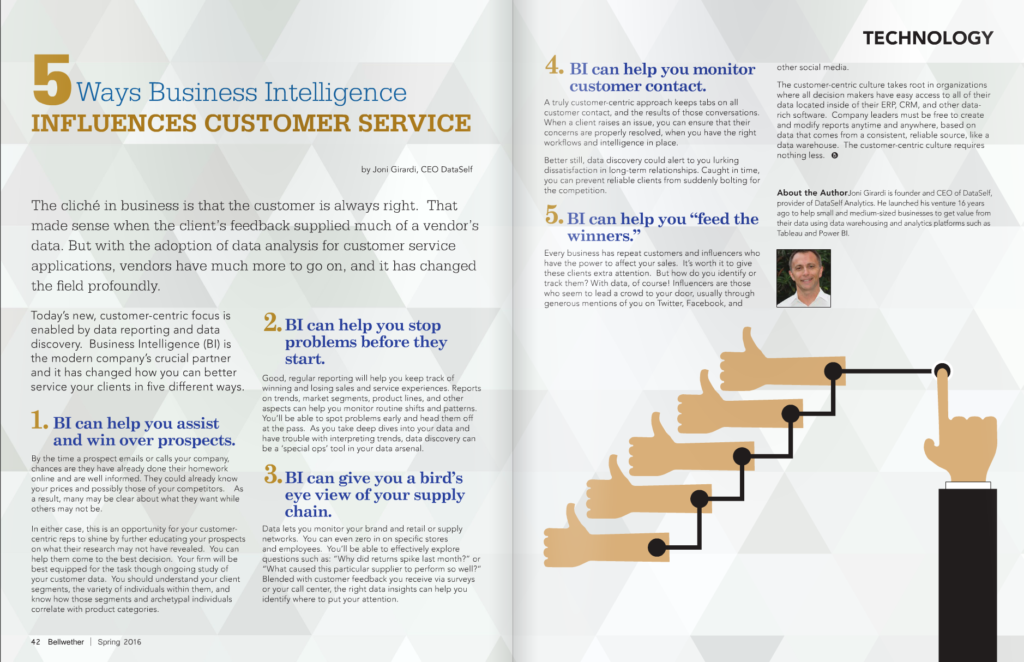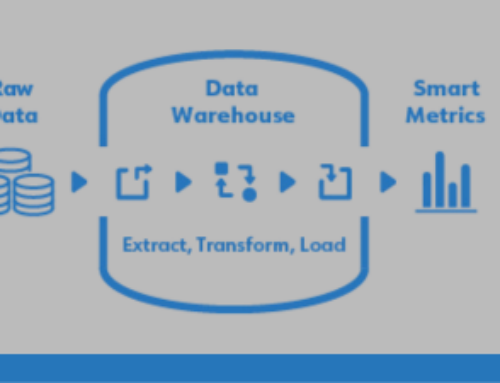The cliche is that the customer is always right. That made sense when the customer’s feedback supplied much of a vendor’s data. But with the adoption of data analysis for customer service applications, vendors have much more to go on — and it has changed the field profoundly.
Bellwether Magazine_Spring 2016
 Today’s new customer-centric focus is enabled by data reporting and data discovery. Business Intelligence (BI) is the modern crucial partner and it has changed how you can better service your clients in five different ways.
Today’s new customer-centric focus is enabled by data reporting and data discovery. Business Intelligence (BI) is the modern crucial partner and it has changed how you can better service your clients in five different ways.
1. BI can help you assists and win over prospects.
By the time a customer emails or calls your company, chances are they have already done their homework online and are well informed. They could know your prices and possibly those of your competitors. As a result, many may be clear about what they want while others may not be.
In either case, this is an opportunity for your customer-centric reps to shine by further educating your prospects on what their research may not have revealed. You can help them come to the best decision. Your firm will be best equipped for the task through ongoing study of your customer data. You should understand your client segments, the variety of individuals within them, and know those segments and archetypal individuals correlate with product categories.
2. BI can help you stop problems before they start.
Good, regular reporting will help you track of winning and losing sales and service experiences. Reports on trends, market segments, product lines, and other aspects can help you monitor routine shifts and patterns. You’ll be able to spot problemas early and head them off at the pass. As you take deep dives into your data and have trouble with interpreting trends, data discovery can be a ‘special ops’ tool in your data arsenal.
3. BI can give you a bird’s eye view of your supply chain.
Data lets you monitor your brand and retail or supply networks. You can even zero in on specific stores and employees. You’ll be able to effectively explore questions such as: “Why did returns spike last month?” or “What caused this particular supplier to perform so well?”. Blended with customer feedback you receive via surveys or your call center, the right data insights can help you identify where to put your attention.
4. BI can help you monitor customer contact.
A truly customer-centric approach keeps tabs on all customer contact, and the results of those conversations. When a client raises an issue, you can ensure that their concerns are properly resolved, when you have the right workflows and intelligence in place.
Better still, data discovery could alert to you lurking dissatisfaction in long-term relationships. Caught in time, you can prevent reliable clients form suddenly bolting for the competition.
5. BI can help you “feed the winners”.
Every business has repeat customers and influencers who have the power to affect your sales. It’s with it to give these clients extra attention. But how do you identify or track them? With data, of course! Influencers are those who seem to lead a crowd to your door, usually through generous mentions of you on Twitter, Facebook and other social media.
The customer-centric culture takes root in organizations where all decision makers have easy access to all of their data located inside their ERP, CRM, and other data-rich software. Company leaders must be free to create and modify reports anytime and anywhere, based on data that comes from a consistent, reliable source, like a data warehouse. The customer-centric culture requires nothing less.





